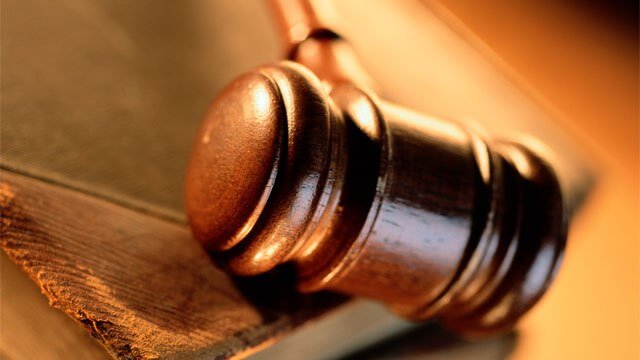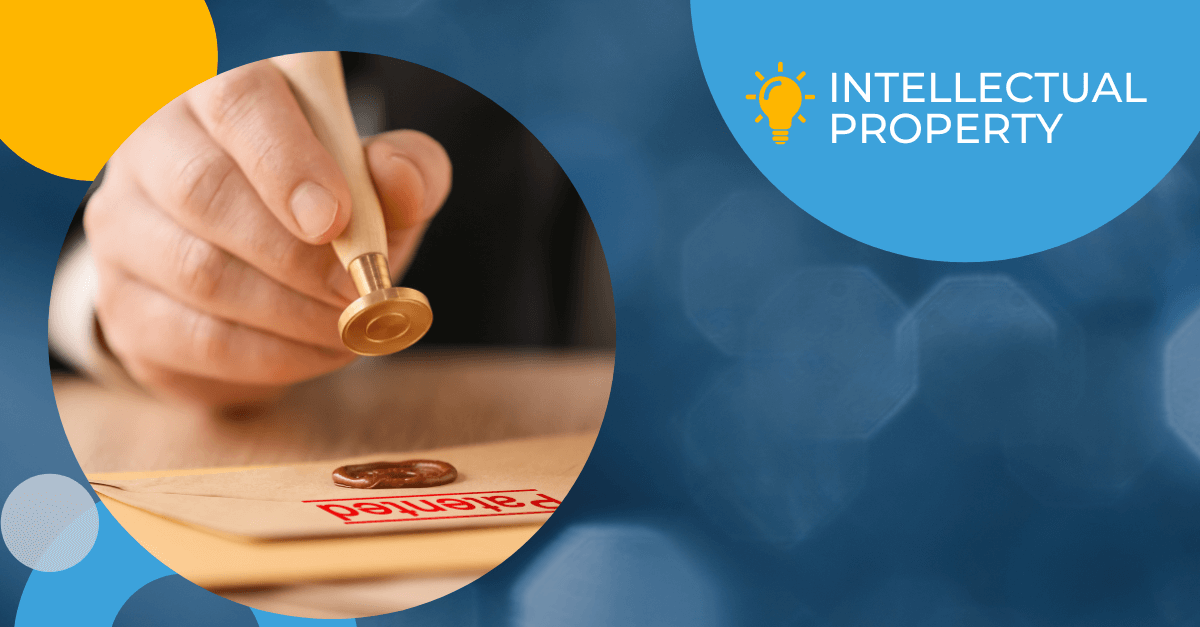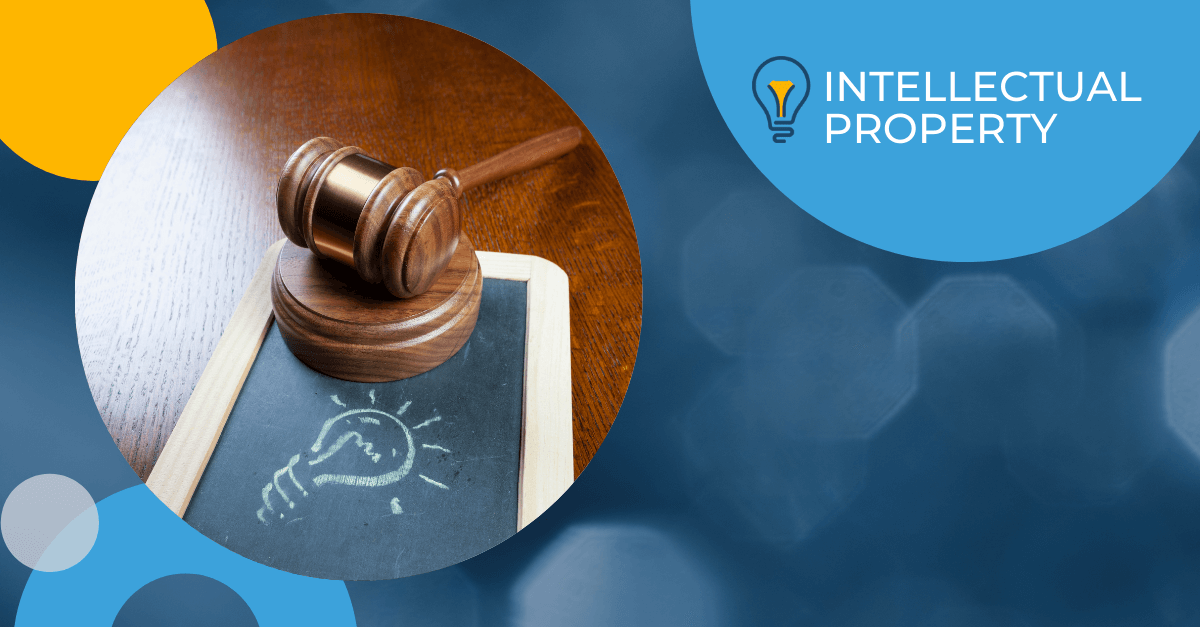Category: Intellectual Property
Ten facts you didn’t know about the Paris Convention

The Paris Convention for the protection of Industrial Property was first adopted in 1883 and marked a significant turning point in intellectual property development and protection as it was one of the first of its kind. The Paris Convention applies to intellectual property protection in a broad sense, helping the convention reign on today. You may or may not already know a bit about the treaty, here are ten facts you undoubtedly didn’t know about the Paris Convention.
1. Laying the groundwork
In 1873 the Government of the Empire of Austria-Hungary invited other countries to an international exhibition of inventions held at Vienna. However, many inventors declined to exhibit their inventions at that exhibition, due to the inadequate legal protection offered. This led to two notable developments: first, Austria passed a law, securing temporary protections for all foreigners participating in the exhibition for their inventions, trademarks and industrial designs. Second, the Congress of Vienna for Patent Reform was convened later that year. As a follow-up to the Vienna Congress, an International Congress on Industrial Property was convened in Paris in 1878. The main result of which, was the drive toward “determining the basis of uniform legislation” in the field of industrial property.
2. The first international IP convention
In 1883 in Paris, The International Convention for the Protection of Industrial Property was first signed by an initial 11 states. It has since come to be known as the Paris Convention.
3. Revisions and amendments
Since then it has been revised 6 times, at: Brussels in 1900, at Washington in 1911, at The Hague in 1925, at London in 1934, at Lisbon in 1958 and at Stockholm in 1967, and was amended in 1979.
4. A union of patenting authorities
Countries that signed the Paris Convention formed a “Union” of patenting authorities, and are sometimes referred to as the “Paris Union.”
5. Key tenets
Three main provisions were established with the Paris Convention: right to national treatment, right of priority, common rules and a unified framework for the implementation of the convention.
6. No preferential treatment
With national treatment, Paris Union countries are obligated to show no preferential treatment to patent holders who are citizens over those who are not. Patent holders who are non-residents and non-nationals of a Paris Union country are given the same expectations and rights under the law as nationals of said country.
7. International filing challenge
Before the Paris Convention, patent applications had to be made roughly at the same time in all countries where protections were sought, in order to avoid a publication in one country destroying the novelty of the invention in the other countries.
8. International filing solution
With the Paris Convention, the right of priority means that a patent that has been filed in a home country is allocated a 12-month period to file a Paris Convention application (or a direct national filing application claiming priority) in countries party to the Paris Convention. With this application Patent holders can choose to file directly with national or regional patent offices with Paris Convention priority (i.e. recognition of the initial priority date in their home country as the priority date).
9. Current contracting parties
There are currently 177 total contracting parties to the convention. The most recent countries to enforce are Samoa (2013), Kuwait (2014), and Afghanistan (2017).
10. Not to be confused with PCT
The Paris Convention is not to be confused with the Patent Cooperation Treaty (PCT). The PCT is also an international treaty, whereby applicants file once and within 12 months can file a PCT filing to preserve protections in other countries. The difference being that the PCT is equivalent to filing separate patent applications in each specific PCT country. With the PCT, patent holders have about 30 months (depending on the country) to bring the patent to National Phase and validate the patent in the specific PCT countries.
Get the latest insights delivered to your inbox
What is Patent Litigation?

In simple terms, patent litigation is the legal process that unfolds when someone who owns the patent for a particular invention enforces their right by suing another for manufacturing or selling the invention without permission. More often than not, this claim is countered by the accused party who will argue that that particular patent should be deemed invalid.
First-to-File
The first-to-file system is now universal and used in all countries, including the US, which switched to first-to-file when the America Invents Act was signed into law in 2013. That means that even if a person had already developed an idea, unless they have already filed to begin the patenting process, that idea would still be up for ownership.
Patent Litigation – The Long Game
Make no mistake, patent litigation lawsuits are rarely short, easy or inexpensive. That’s because both parties are trying to claim ownership of the same idea or invention and the evidence here is often quite murky. Various patent experts need to be consulted and deposed and the discovery process is complicated and time-consuming. With a lengthy trial comes a hefty price tag and many patent litigation cases will notch up millions of dollars in expenses.
If a claim is being countered, it is the job of the legal team to prove that a patent is invalid. There are many ways to do this, but they all revolve around the idea that an invention lacks originality. If an invention is not far-removed enough from an existing patent, there could well be grounds for making this case.
Settle Up
Once a decision has been made by the courts, the mediation process can begin. In many cases, damages are awarded to the winning party and then the court will mediate between the two.
It’s the aim of the court to get both sides to come to a written agreement. Quite often this will result in the losing party, if countering a claim of copyright infringement, paying royalties to the winning side in order to continue using a patented invention.
Top Notch Support
With the right team behind you, a patent litigation lawsuit can be very profitable indeed. But the process is long and arduous and may end up costing more than the damages you are awarded. A top-notch patent firm will be able to offer you the support you need and provide the necessary expertise to deal with every aspect of your case, but don’t forget it’s a long game, and one that you need the patience and perseverance to play.
Get the latest insights delivered to your inbox
Patent Embodiment: Why Multiple Are So Helpful

“Patent embodiment is the description of the production, use, practice, or expression of an invention in the patent application.” according to the UpCounsel. Imagine this: ‘Company A’ owns a patent for an energy-efficient lawnmower. ‘Company B’ starts manufacturing a lawnmower that looks eerily similar. When ‘Company A’ finds out, it sends a cease and desist letter. ‘Company B’ fights back, saying its product is not infringing. They go to court, where a deciding authority — a judge, examiner or board — delves into ‘Company A’s’ patent claims to determine what legally constitutes infringing activity.
The claims’ language is at the core of this decision: If it is solid and transparent, then the semantic investigation will probably work out in favor of ‘Company A,’ the patent owner. If the patent claims are vague, ‘Company B’ could win the case.
How to protect yourself
To avoid being on the losing end of such a judgment, IP applicants should consider listing multiple embodiments on their patent applications. The Oxford Dictionary defines an embodiment as “representing or expressing something in a tangible or visible form.” On a patent application, an embodiment is a detailed description of how an invention can be made or used. It’s not enough to assume that this is obvious or implied – it must be explicitly stated to take advantage of maximum protection.
For example, if there are multiple methods of making an invention or if it is an invention that has (or could have) various uses, the patent applicant should list every possible embodiment they can imagine in the specification. Doing so makes it less likely that an infringer will later be able to exploit vagueness in the issued patent.
Global Patent Filing
Remember Companies A and B above? Now that you understand how critical patent semantics can be, one of the most important steps you can take when filing for protection in multiple countries is to ensure that you have translated every embodiment accurately. You want there to be as little interpretive “wiggle room” as possible should IP litigation occur.
IP litigation can be particularly challenging when a determination is to be made by a judge, examiner or board that is familiar with a different IP system, language and culture from your own. An LSP specializing in international patent filing can ensure that every application you file is translated accurately and appropriately.
Case Study: Purdue vs. Alvogen
In the case Purdue Pharma LP vs. Alvogen Pine Brook LLC, one point of contention clearly illustrates the importance of thoroughly listing multiple embodiments. Here’s what happened:
- Purdue Pharma owned US Patent No. 9,750,703 for “encased tamper-resistant controlled release dosage forms.”
- Purdue Pharma used this technology to create Butrans, a prescription medication used to “treat pain that continues around the clock.” Butrans comes in the form of a patch that contains an extended-release opioid absorbed through the skin over seven days.
- While Butrans was still patent-protected, Alvogen, another life science company, started marketing a generic version of the extended-release pain medication.
- Purdue Pharma claimed Alvogen’s generic version infringed upon Patent No. 9,750,703.
- The case went to the Delaware District Court, where Purdue won.
A closer look at Patent No. 9,750,703
In discussing a time-release shell for a pharmaceutical, the following phrase in Patent No. 9,750,703 became critical to Purdue’s win: “A layer encasing the core and comprising a second portion of hydrocodone bitartrate dispersed in a second matrix material.” At issue was the meaning of “layer encasing the core.” Did the patent refer to, and protect only a single-material layer, as Alvogen asserted? If so, it couldn’t apply to a shell made up of multiple materials, as their product did.
Ultimately, the court concluded after reviewing the following embodiment regarding different ways Purdue’s shell could be constructed: “The shell of the dosage form can be formed, e.g., by compression coating, molding, spraying one or more layers onto the core, dipping one or more layers onto the core or a combination thereof.” The court sided with Purdue and concluded that the term ‘layer encasing the core’ means “one or more materials enclosing a space or surrounding the core.”
The takeaway here is that because Purdue’s application was farsighted enough to include these multiple embodiments — i.e., the various ways in which their shell could be created — they were able to prevail in the infringement suit against Alvogen.
Invaluable patent embodiment: How multiple patent embodiments are especially crucial with global patents
If you plan to protect your patents in multiple countries, the last place you want to find yourself is in a legal dispute in front of a foreign authority who has to read between your lines. Working with an LSP that can anticipate potential local unclarities can, ultimately, make a huge difference. By knowing each region’s IP system, being fluent in the local language, and understanding the cultural lens through which the details in your filing may one day be viewed, the right LSP can help ensure your IP protection is rock-solid uncontestable.
Get the latest insights delivered to your inbox
The Meaning of Patent “Nonobviousness”

Do you use Visual Voicemail? This system allows users to select which voicemail they want to listen to out of a list of all voicemails received. It seems like an obvious solution to the problem of traditional voicemailboxes, where it was previously accepted that we’d always have to tap our way through each message to get to the next, and yet, Klausner Technology successfully patented “visual voicemail” in the 1990s (patents 5,572,576 and 5,283,818). Now, Apple and many other companies license those seemingly obvious patents.
Many of the best inventions are like this, and it’s one of the reasons it can be so hard for inventors to assess whether their own invention is obvious or not. Patent attorney Gene Quinn, founder and editor of IPWatchdog, opines, “Indeed, one of the most frustrating things I do as a patent attorney is advise inventors on whether their invention is obvious.” And it’s important: Nonobviousness is one of four qualities required by U.S. patent law. According to Title 35 U.S.C. 101, these four qualities are:
- The invention must be statutory
- The invention must be novel
- The invention must be useful
- The invention must be nonobvious
One might think that if an invention is new, or novel, it must not have been obvious, or it would already exist and be patented. However, an invention can be both novel and obvious, rendering it ineligible for patenting. Here’s an example from NOLO: “An inventor created a method of clearing manure from a barn without using human labor. The system combined a water tank, flushing system, and a sloping barn floor. No prior device had performed this function so the invention was novel. However, the Supreme Court held that the combination of a water tank and a sloping barn floor was not patentable because it was obvious.”
What makes an invention nonobvious?
Here’s what the U.S. law says:
“A patent may not be obtained though the invention is not identically disclosed or described as set forth in section 102 of this title, if the differences between the subject matter sought to be patented and the prior art are such that the subject matter as a whole would have been obvious at the time the invention was made to a person having ordinary skill in the art to which said subject matter pertains. Patentability shall not be negatived by the manner in which the invention was made.”
Put more simply, according to IPWatchdog:
- You have invented A+B.
- A is known in the prior art.
- B is known in the prior art.
- Upon looking at A and then looking at B, would someone of skill in the art consider A+B to be already known?
- If the answer is yes, then A+B is obvious.
- If the answer is no, then A+B is not obvious.
So how is nonobviousness determined?
In its 1966 Graham v. John Deere Co. decision, the U.S. Supreme Court established a three-part methodology for making this judgement when a patent’s nonobviousness is challenged. There must be an assessment of:
- the differences between the prior art and challenged claims
- the level of ordinary skill in the field of the pertinent art at the time of the plaintiff’s invention
- what one possessing that level of skill would have deemed to be obvious from the prior art reference.
In the 2007 KSR Int’l. Co. v. Teleflex Inc. ruling, the Supreme Court added a fourth potential factor: objective, or “secondary,” considerations. These may include:
- the commercial success of the invention
- whether the invention satisfies a long-felt need in the industry
- failure of others to find a solution to the problem the invention solves
- copying by others
- licensing by others
- experts’ praise regarding invention
- experts’ skepticism regarding invention.
Nonobviousness in practice
Even with these criteria and methods in place, USPTO and judicial judgments of nonobviousness remain difficult for anyone — inventor or patent attorney — to predict with certainty. One major factor is that there can be disagreement over what constitutes “ordinary skill” in a field, and yet determining this is a prerequisite for ascertaining what might be obvious to a person possessing it.
Quinn also sees an uneven application of the guidelines, writing, “In some technology areas nothing ever seems to be obvious, in other areas virtually everything seems to be obvious.” He adds, “If Irving Inventor could get a patent on that simple kitchen gadget, how is it possible that my complex software program that has never existed before could be considered obvious? That is a good question, and one without a satisfactory answer in my opinion.” He suggests that individual examiners’ own philosophies and biases may play as much of a role in determining nonobviousness than legal standards.
So if you’ve found yourself not altogether clear about what nonobviousness is, you’re not alone. After all, different things are obvious to different people — thank you, Klausner Technology.
Get the latest insights delivered to your inbox
6 Strategies for Managing Patent Translation & Filing Costs

A new article listing 6 top strategies/tips for managing patent translation and filing costs has just been posted on IP Watchdog. The authors are Gene Quinn, a patent attorney and president of IPWatchdog, and Ethan Perlson, our own director of marketing.
An excerpt:
Given the sluggish economic recovery and continued budget pressure on IP departments, it makes sense to consider new strategies for lowering the steep costs related to international patent filing. Patent Translations can account for up to 50% of the cost of national stage entry, so cost-cutting strategies could make a significant difference in the bottom line. Strategic costs savings can then be used to stretch a diminishing budget, or offer opportunities to expand patent protection into other countries without busting your budget.
Before moving into discussion about ways to cut cost it is important to focus on the end goal. It is one thing to cut costs, but to borrow a popular political phrase – you want to cut with a scapula, not a clever. Thus, keeping in mind the ultimately end goal at every step will allow you to engage cost cutting strategies without compromising your patent project. Of course, the end goal is to obtain the broadest, strongest patent portfolio; obtaining patents in a variety of jurisdictions where meaningful business opportunities exist.
You can read the full article here.
Managing patent translation and filing costs can be simplified when working with experienced-professional language service providers, like ourselves. Morningside has delivered accurate, reliable patent translations for the world’s largest companies and law firms. Our streamlined filing solution helps lower costs and ensures quality. Contact us today to learn more.
Get the latest insights delivered to your inbox
Patent Filing in China

More global companies than ever before are seeking to protect their intellectual property rights in China. They rightly view China as one of the world’s largest markets. We at Morningside specialize in patent translation and filing, and over the last five years, we have watched as China has shifted from a country that clients often file in to one they view as absolutely essential for IPR purposes. In 2012, Morningside is slated to translate and file more applications for national stage entry into China than ever before.
Of course the big question mark regarding filing in China continues to be the quality of patent protection and the widescale IP infringement that dissuades many global companies from filing there. This week, there was some encouraging news. China’s State Intellectual Property Office (SIPO) said it would increase enforcement to prevent IP infringement. At a forum that included foreign diplomats and trade representatives, Wu Kai, deputy director of SIPO’s International Cooperation Department, said, “The Chinese government has attached great importance to this issue in recent years and made great achievements in legislation, enforcement, management, and training.”
It’s not clear if this constitutes a real change or just PR. After all, earlier this month China was once again at the top of the United States Trade Representative’s priority watchlist of countries that condone IP infringement.
Still, most experts agree that IP enforcement has improved in China, and patent holders are certainly investing considerable sums of money filing in China: In 2011, the number of applications surpassed 1.63 million, an increase of 33.6 percent over 2010. And filings grew from 63,000 in 2001 to 526,000 in 2011, an annual average increase of 23.6 percent.
Hopefully, China will follow through with improved IP laws and enforcement. If they do, we can expect patent filings in China to continue to increase, and global companies who seek IP protection in China to see significant ROI from this decision.

